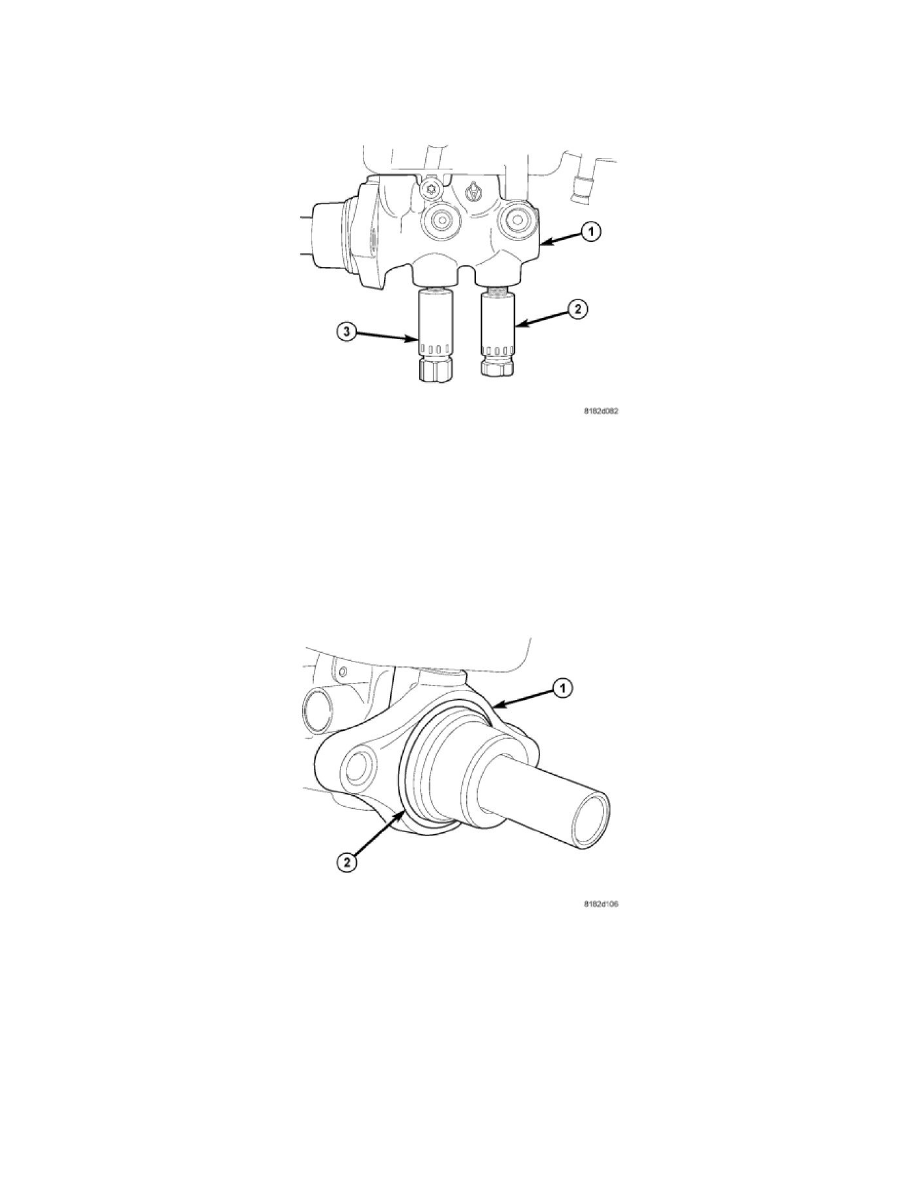Caliber L4-2.0L (2008)

13. Road test the vehicle to ensure proper operation of the brakes.
Master Cylinder - Without ABS
MASTER CYLINDER - WITHOUT ABS
NOTE: The proportioning valves are not identical and cannot be interchanged. The proportioning valve that threads into the primary port (3)
has M10 x 1 threads going into the master cylinder (1). The proportioning valve that threads into the secondary port (2) has M12 x 1 threads
going into the master cylinder (1).
1. If removed, install the proportioning valves (2, 3) in their master cylinder ports. Tighten the proportioning valves to 30 Nm (22 ft. lbs.).
NOTE: The master cylinder must be bled before installing it on the vehicle.
2. Bench bleed the master cylinder. See: Procedures
3. Wipe the face of the power brake booster clean where the master cylinder seal comes in contact when it's installed. Do not get any cleaner or
debris inside the booster.
CAUTION: When installing a master cylinder on the vehicle, a NEW vacuum seal (2) MUST be installed on the master cylinder mounting
flange (1).
4. If the master cylinder does not have a new vacuum seal (2) on the mounting flange (1), remove it. Install a NEW vacuum seal on the master
cylinder mounting flange making sure the seal fits squarely in its groove.
CAUTION: If resistance is met during master cylinder insertion into power brake booster, the master cylinder push rod may not be lined
up with the booster push rod. Remove the master cylinder, realign and insert it again.
5. Line the master cylinder mounting holes up with the mounting studs on the power brake booster. Ensure the master cylinder piston push rod lines
up with the booster push rod, then carefully slide the master cylinder into the power brake booster until it contacts the face of the booster.
